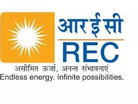While the study stops short of linking the disaster directly to climate change, it says that the increasing frequency of high-mountain slope instabilities can likely be related to ‘observed atmospheric warming and corresponding long-term changes in cryospheric conditions (glaciers, permafrost)’.It also warns on the hydropower projects coming up in the hill state.
‘The disaster tragically revealed the risks associated with the rapid expansion of hydropower infrastructure into increasingly unstable territory’, says the study titled Th study- A massive rock and ice avalanche caused the 2021 disaster at Chamoli, Indian Himalayas.
It adds that “human activities that intersect with the mountain cryosphere can increase risk and are common in Himalayan valleys where hydropower development is proliferating due to growing energy demands, the need for economic development, and efforts to transition into a low-carbon society “.
Expanding on possible linkage with climate change, the study points out that air and surface temperatures have been increasing across the Himalayan region, with greater rates of warming during the second half of the 20th Century and at higher elevations .
‘ Most glaciers in the Himalaya are shrinking and mass loss rates are accelerating across the region . Glacier shrinkage uncovers and destabilizes mountain flanks and strongly alters the hydrological and thermal regimes of the underlying rock’, it says.It also surmised that increasing ground temperatures at the failure site of the Chamoli avalanche could have resulted in reduced strength of the frozen rock mass by altering the rock hydrology and the mechanical properties of discontinuities and the failed rock mass.
Read More News on
(Catch all the Business News, Breaking News, Budget 2024 Events and Latest News Updates on The Economic Times.)
Subscribe to The Economic Times Prime and read the ET ePaper online.
Read More News on
(Catch all the Business News, Breaking News, Budget 2024 Events and Latest News Updates on The Economic Times.)
Subscribe to The Economic Times Prime and read the ET ePaper online.









 Get Unlimited Access to The Economic Times
Get Unlimited Access to The Economic Times
